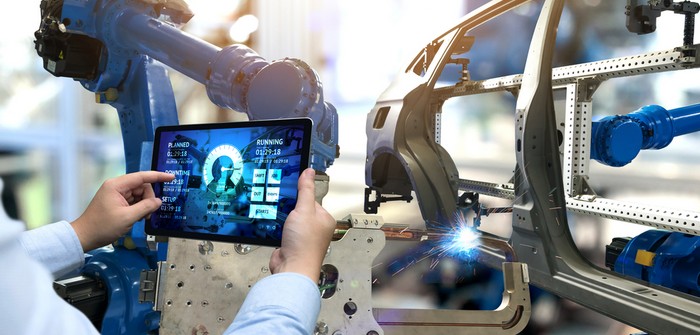Industrial IoT is increasingly becoming a growth market. Forecasts expect a share of 20 percent of total sales within the next five years. The reasons for this are said to be extensions of previous business models to include intelligent services.
The core of the Internet of Things (IoT) is, among other things, the data-driven increase in efficiency in the development and maintenance of products and services, as well as user-oriented adaptation in manufacturing.
Table of Contents: What awaits you in this article
IoT Growth Market Consumer Products
For years, customers have been familiar with the business model of subsequent delivery. Anyone who buys products such as printers or capsule machines knows that sooner rather than later they will need replacements for the basic components of the devices, which are often no longer even supplied. This applies to the increasingly differentiated printer cartridges as well as coffee capsules. Often, the basic devices with comparatively low purchase costs act as a lure to be able to profitably sell the subsequent products later, which are more profitable for the manufacturers in the long term.
Industrial IoT for greater customer loyalty
IoT is now expected to make this process even more efficient and help expand it. For example, producers could offer their customers to take over the reordering process through data analysis and production monitoring. Whenever checks showed that the stock stored at the customer’s premises was nearing its end, sensors would be able to transmit this circumstance to the developer as an alarm. The developer could then immediately replenish the supply without the user having to take any action. Both sides seem to benefit from this. One side gets an optimized, cost-, time- and effort-efficient production of its products. The other side gets a closer manufacturer-customer relationship.
Error detection through IoT
Machine builders know that even tiny deviations in production can have catastrophic effects. Machines that are calibrated to values that do not match the parameters required in reality quickly lead to failures and production stops.
Here, too, Industrial IoT offers assistance. Systems that can analyze in real time how well or poorly the respective process is working enable their builders to intervene in time and prevent worse. Thanks to this technology, manufacturers are now able to correct these faults faster than ever, often while the plant is still in operation. In most cases, it is sufficient to replace the smallest individual components instead of extensive shutdowns and repairs. This also enables massive savings in time, costs and materials.
Industrial IoT wear prediction
No matter how well machines are maintained, eventually their parts will give in to constant stress. And it’s not uncommon for these failures to occur just when you least expect them. Nor are the spare parts urgently needed to repair them always immediately available on site.
Industrial IoT can also provide valuable anticipatory relief here. Equipment that continuously provides real-time data about its condition offers the ability to even predict the life of its components. Based on past experience with similar elements and their wear conditions, as well as constant checks on their current condition, predictions can be made about when best to intervene and replace them.
Providers of such technology solutions could also make these systems available to other manufacturers and thus open up further business areas. As the development of the Internet of Things (IoT) progresses, the wealth of possible applications is also growing. What seems unthinkable or desirable today may become commonplace in the foreseeable future thanks to real-time analyses, enhanced machine learning and the evaluation of patterns.














